London Books L
Click here to contribute a review
|
Peter Gascoine
ISBN
0-9059-6801-8 - 300mm x 212mm - 32 pages - Hardback "Surprisingly, perhaps, this book was still being sold new by Amazon in December 2007, though at £2.84, a little more than the cover-price shown. This is the story of the London Transport Routemasters, and the sole single-deck participant, AEC Merlin MBA606, that received 'all over advertising' between 1969 and 1976. As well as the pictures of each of the vehicles, there is an overall chronological history, a summary list of vehicles, adverts and dates, each vehicle's movements and route workings and a written description of each of the often intricate liveries (the last-mentioned adding a little colour to the monochrome pictures). Memories abound with the recollection of names such as Peter Dominic, Pye, and Esso Blue to name but a few! A fascinating little volume that fully justifies it's slim share of space on the 'London' bookshelf." AAP
Published in 1977 by Peter Gascoine |
|
Roy Hobbs
ISBN
0-7110-3001-4 - 245mm x 190mm - 80 pages - Hardback "This is really a superb picture book, backed up by often lengthy and informative captions. Don't be fooled by the cover - there is extensive coverage of LT's red central area routes in this volume, particularly from the part of Surrey that falls within the Greater London boundary. Most of the pictures are newly published, and they are often as interesting for the background social history as for their intrinsic merit as transport pictures." AAP
Published in 2004 by Ian Allan |
|
Ken Glazier
ISBN
1-8541-4269-0 - 222mm x 286mm - 144 pages - Hardback "
'At the end of what was then known as the Great War of
1914-1918, the London General Omnibus Company had a virtual
monopoly of bus services in Greater London'. Thus begins
what must be the most comprehensively researched, written and
illustrated historical documentation of over half a century of
London's bus services ever published. Over seven weighty
volumes, Ken Glazier pieces together the complex history of bus
travel in the capital city, and in doing so provides the
modeller with a huge amount of pictorial, technical and social
information. 1918-29 was an era dominated by open tops and solid
tyres: both, like windscreen protection for drivers, were
eventually permitted by the Metropolitan Police, which did much
to breach the pent-up frustrations of bus designers! The
lucrative London market saw the General increasingly running up
against competition. It was these battles, against the
authorities and the competitors, which led to the campaign for
unification that saw..... "
continued below
-
|
|
Ken Glazier
ISBN
1-8541-4170-8 - 222mm x 286mm - 128 pages - Hardback
continues from above
- "..... the
London Passenger Transport Board set up in 1933. The immediate
years leading to its formation saw the beginnings of
standardisation that was to see the future London Transport in
good stead for many years to come: the influx of LT, ST, T and
STL types paved the way for the forthcoming London monopoly.
Often overlooked in this era is the end of the many independent
companies that had served Londoner's, many for over ten years,
and the demise of the nine municipal and three company-owned
tram systems which were taken over by the new authority. As with
each of the volumes in this series the appendices at the back of
the book are enormously informative: the massive variety of
vehicles and bodywork taken into central control from the
independents would make alarming reading to today's operators,
though probably fascinates the modellers and historians! All in
all this is perhaps the era that had the most profound impact on
the development of London bus travel in the decades to come,
decades which began in earnest on ..... "
continued below
-
|
|
Ken Glazier
ISBN
1-8541-4182-1 - 222mm x 286mm - 160 pages - Hardback
continues from above
- "..... the 1st
July 1933. On this day the London Passenger Transport Board came
into being and assumed control of most of the capital's
transport overnight. London Transport was to become an
undertaking of epic proportions, and of considerable influence.
The sides of buses changed forever as the fleet names of Pickup,
British, ACME, General, Sunset, Imperial and a host of others
were replaced with the words London TransporT
in a manner which would soon be as much a part of London as the
red buses themselves. In July 1934 the first of two experimental
London Transport trolleybuses was licensed: this six wheeled
vehicle (rather than the second to be licensed, a four wheeled
vehicle) was to become the basis of a largely standardised fleet
of electric buses that were to spell the end of London's tram
system, a process that was interrupted by the onset of the
second World War..... "
continued below -
|
|
Ken Glazier
ISBN
1-8541-4136-8 - 222mm x 286mm - 190 pages - Hardback
continues from above
- ".....
and, ultimately, a lengthy period of unrivalled austerity. The
demands of the war effort saw the introduction of conductresses,
often on an ever changing fleet of vehicles. The march towards
standardisation was rudely interrupted, and liveries were
modified by black-out restrictions, and, later, paint
shortages. The will of the people kept, often remarkably, things
moving, and there is much to read on the heroics that
accompanied many incidents of the period. The 'Make do and Mend'
approach that was required is well covered, both in words and in
pictures. LT's fleet not only suffered losses though enemy
action, but was also commandeered in parts by the War Office,
primarily for vehicles to act as ambulances. This is covered in
detail in one of eight comprehensive appendices at the back of
the book. The gas buses, the boats running tram replacement
services, and the 475 buses and 18 trolleybuses loaned by
outside operators such as Crosville, Leeds, Halifax, Leicester,
Youngs of Paisley and Manchester's Crossleys (to name but a very
few of the fifty) to keep London moving are all recorded. The
book does, in fact, move on into the early peace and austerity
years, times when the effects of the war were deeply felt. ..... "
continued below -
|
|
Ken Glazier
ISBN
1-8541-4236-4 - 222mm x 286mm - 152 pages - Hardback
continues from above
- "..... The immediate
post-war period found London Transport with a profoundly
impoverished, and largely life-expired fleet after the years of
enforced neglect. Even the steady influx of RTs throughout the
period could not initially keep London's bus numbers in line
with a hugely increasing number of passengers: the crisis hires
which took its place from operator's outside of London in the
late 40s saw an often extraordinary variety of vehicles, the
scale of which has not been seen in London since. Infrastructure
renewal was to gather pace significantly as the years moved on.
All of this provides fruitful pictorial and written items for
research by the modeller as well as the historian. Green Line
services returned, and the end of the trams (which was announced
in 1946 for the second time) was seen to fruition in 1952.
Towards the end of the period it was at last becoming possible
to extend the number of services run, as well as keep pace with
the increasing number of vehicles required. Gradually there came
about an increasing sense of peaceful normality. However, the
era still ends with London's buses..... "
continued below |
|
Ken Glazier
ISBN
1-8541-4116-3 - 222mm x 286mm - 184 pages - Hardback
continues from above
"..... recovering from the ravages of the second Word War, a
recovery that was set continue well into the Fifties. The
artificial optimism rife in the early part of the decade did
little to prevent the pre-wad and austerity fleets lingering in
towards the middle of the decade. The end of the clang and
clatter of the London trams and their replacement with buses was
seen as progress. The tide, perhaps, began to turn with the
introduction of the Lowbridge RLH: the then 'new towns' saw a
large extension to London's bus operations as London Transport's
ability to cope with new demands began to improve. The
Trolleybus fleet began its terminal decline in the face of
increasingly numbers of the iconic AEC RTs and the birth of the
Routemaster: the RF began its period of supremacy in the Country
areas, and with the Green Line services. |
|
Ken Glazier
ISBN
1-8541-4205-4 - 222mm x 286mm - 224 pages - Hardback
continues from above -
"...... the swinging Sixties - or at least that's how the decade
started for London's buses. This volume records the end of the
London trolleybuses, the early optimism of the 'standardised'
Routemaster years leading into the decline that heralded one man
operation (as it was then called), experimentation, indifferent
industrial relations and the reshaping plans, and the increasing
problems of poor vehicle availability: many aspects of the facts
recorded bring forth some interesting pictorial documentation.
The well researched arrival of the Atlanteans and Merlins, and,
of course, FRM1 documents what eventually brought forth huge changes to
London's bus scene. A detailed set of Appendices show fleet
changes through the decade, a compete route listing for 1.1.60
(who remembers LT's Greyhound Express?!), and various other
elements of interest completes this mammoth record of London's
bus transport history..... unless Ken Glazier is working quietly
on an 'in the 1970s' volume - one can but hope!" |
|
Tom McLachlan
ISBN
1-898432-74-0 – 215mm x 298mm – 125 pages – Hardback “Under the London Regional Transport Act 1984, LT was again brought under central government control. The Act required LT to set up subsidiary companies to run both buses and the Underground. This book looks at the decade of change following the introduction of that act, the background to the act and the way in which the change was implemented is described in detail and is followed by sections on the Operating Companies and Independent Operators. The illustrations are rich with liveries that are no longer with us, e.g. Grey-Green and Capital Citybus The book contains three very interesting appendices, a table of garage histories sorted by garage code, District maps of the main areas from both north and south of the river and finally a table showing the general decline in garages, buses, etc. since 1955.” BJK
Published in 1996 by Venture Publications |
|
David Stewart
ISBN
0-85414-268-2 – 212mm x 200mm – 84 pages – Softback “The nice thing about books like this is not only the fact that they will be a great memory jogger for the future but they also show how much has changed in 3 short years. The book is divided into chapters devoted to each type of bus running in London, e.g. Step-Entrance Double Deckers, Low-Floor Double-Deckers, etc., which means that the book if reproduced today would be light of two chapters as all step-entrance buses have now disappeared from the London scene. It is also remarkable how many liveries have disappeared, either because of TfLs ‘Red Bus’ policy or because others, like Tellings Golden Miller, no longer provide bus services in London. There are additional chapters on Sightseeing Buses and a catch-all ‘Miscellaneous Operations’ which captures Driver Training, Rail Replacement, etc. The pictures are all top quality and have been selected to give a wide coverage of all bus types in operation in London during 2003.” BJK
Published in 2003 by Capital Transport |
|
John Reed
ISBN
1-85414-233-X – 218mm x 240mm – 80 pages – Softback “This super little book was produced in conjunction with London’s Transport Museum so its pedigree is assured. The book contains a plethora of information about all things buses in London from the nineteenth century to the current day and from horse drawn vehicles to the modern low-floor buses. There is simply too much information in this book to begin to cover in a short review but it really is a great introduction to the history of London buses. As well as details on the buses themselves there are sections on bus stops, shelters, ticketing and much more. The pictures are well chosen to illustrate the text and as expected some of the vehicles pictured are from the museums own collection, either in regular service or in preservation. A great introduction, it makes you want to find out more.” BJK
Published in 2000 by Capital Transport |
|
Kevin McCormack
ISBN
0-7110-2701-3 – 245mm x 190mm – 80 pages – Hardback “What separates this book from others of the same era is that it shows buses across the whole of the London Transport area with only a few coming from Central London this enables a wider variety of vehicles and liveries to be explored. On the introduction page there is a rare pictures of one of the London Transport ECW bodied VRTs in NBC London Country livery. There is also a further opportunity of another livery for the EFE RMA on route 175 with subtle changes to the placement of the LT roundel and advertising. For the modellers there is a super picture of a Metro Scania single decker in Clapton Pond, that would make an excellent diorama and also another of the class in Stevenage Superbus livery in company with a Leyland National in the same colours. An excellent book with a wide variety of buses liveries and locations.” BJK
Published in 1999 by Ian Allan |
|
Ian Cowley
ISBN
0-7110-2263-1 – 172mm x 237mm – 128 pages – Softback “I enjoy this type of book which features fascinating archival photographs contrasted with the same scene in a more modern setting. In this case the subject is London buses. What strikes immediately about this book is that some places have changed beyond all recognition, whilst other have changed very little. There are some great contrasts, e.g. an LT at Westminster station in the 40s compared to a ECW bodied Olympian in the 90s. Not all comparisons are so far apart in time but they nevertheless offer interesting comparisons with some superb pictures. Inevitably with the Routemasters spanning 5 decades (within the timescales of the book) some photographs of then and now both contain pictures of them. The book being published in 1994 is not up to date and it would be great to see an updated version for London and also to see similar publications focussing on buses for other cities or areas of the United Kingdom.“ BJK
Published in 1994 by Ian Allan |
|
Series Editor – Bill Potter
ISBN0-1-904875-44-0
- 150mm x 210mm - 192 pages - Softback "This is the second edition of The London Bus Handbook from the British Bus Publishing Regional Handbook series. This volume details fleet and garage allocations for operators who provide tendered and commercial services within the region, in this case it is primarily TfL . Included are also details for each of the coach operators who provide significant services within the area, although the decision which to include and exclude does seem confusing. The book is lavishly illustrated with examples from each of the fleets covered. This book is an excellent snapshot in time, in this case 2004, of the London Bus scene and will become a historical reference in times to come." BJK
Published
in 2004
by
British Bus Publishing |
|
Jef Johnson
ISBN
0-7110-2496-0 – 245mm x 190mm – 80 pages – Hardback “There have always been a large number of coach operators in London and a few of them are illustrated here between 1950 and 1980. The author tells us that his selection was limited by the small choice available as whilst London buses are frequently photographed coaches have been largely ignored. Having said that the variety in the book is excellent and, whilst the photographs may be limited to London operators, the locations are not constrained by this limitation. Locations such as Oban and Southsea as well as in the capital are included. This was the era of Duple and Plaxton and many varied examples of their coachwork are shown in the book as well of those of Weymann, Willowbrook and Harrington. Van Hool, a common supplier in the 1990s, started supplying the UK in 1969 and an illustration of an early example with Cavalier Coaches is included. The major operators of the period are all covered including Grey Green, Golden Miller, Timpsons and Valiant; many of these have now disappeared from our streets but others, such as Evan Evans can still be found today. Amongst the unusual within this book is a dual entrance AEC Reliance with Plaxton Panorama coachwork.“ BJK
Published in 1996 by Ian Allan |
|
Michael H. C. Baker
ISBN
0-7110-2730-7 – 247mm x 190mm – 80 pages – Hardback “In 1970 London Country Bus Services was created as a subsidiary of the National Bus Company taking over the green Country buses as well as Green Line services. This book covers the two decades spanning this change and takes a circular look at the country services within approximately a 30 mile radius around London. As you would expect the London Transport standard buses, RT, RM and RF are well represented in the book with examples of all of them in both London Transport and NBC liveries. There are also pictures of unexpected buses that were used on London Country services, e.g. AEC Reliance with two door Willowbrook bodywork and Bristol LHS with ECW bodywork. In the 1970s London Country had a severe shortage of buses and borrowed from other parts of the UK and these are also represented with examples from Bournemouth Corporation, Maidstone Borough Corporation and Eastbourne Corporation to name but three. Unusually for such a book there are a few pictures of service vehicles. One of particular interest is an RF in a yellow and grey livery after conversion to a towing vehicle: it’s not clear from the picture what changes had been made to the rear of the bus to convert it but from the three quarter view provided it shows little change.” BJK
Published in 2000 by Ian Allan |
|
Peter Gascoine
ISBN 1-871814-21-9 - 170mm x
240mm - 80 pages - Hardback
"As I write (31.1.08) the first release of EFE's delightful RLH
casting has very recently been released. The RLH's characteristic
upper-deck four-abreast seating with the offside sunken gangway
that intruded on the lower saloon made these handsome and
distinctive Weymann-bodied vehicles something of a favourite to
many a London aficionado. Bought by London Transport from a
batch of Midland General vehicles deemed un-required, they
replaced a mish-mash of low-bridge vehicles in service with
London Transport in 1950-52. The book looks at the complete
history of the class until its withdrawal in 1971, and then goes
further into some of the vehicles after-lives. A huge collection
of pictorial memories, often excellently detailed, many being reproduced for the first time. A
complete list of garage allocations for each bus, and then their
disposals from LT into further service is followed by a
miscellany of further pictures covering re-builds, preservation and
special events that encompasses pictures that often intrigue (how many
in London will remember the yellow RLH48 in all-over advertising
for LBC Radio?). An absorbing book, and worth seeking out." |
|
Ken Russell
ISBN 0-904711-70-6 - 148mm x
210mm - 104 pages - Softback
"The story of the first classes of London Transport rear-engined
front entrance buses placed in service as the general move to
one-man-operated vehicles gathered pace in the 1960s", this
book sets out to record the fortunes of the short (33' 5") AEC
Swifts during their stay in the capital. Challenging times for
LT in the face of declining passenger numbers and staff
retention difficulties brought radical solutions - a decline in
seating and an associated increase in standing room, automatic
fare collection and off-bus tickets sales entered the London
scene on a large scale. This detailed book deserves to be better
known, for the understanding of the time if offers, as much as
the quality of the writing and pictures. All the Swifts come
under scrutiny, including the 'South Wales' SMA and SMW class
and the SMDs. The ultimate decline and disposals that commenced
when the first Leyland Nationals started to appear is documented
in depth. Three detailed appendices list the disposals, the SMD
conversions and a complete list of vehicle codes." |
|
Matthew Wharmby
ISBN 0-7110-3299-6 - 222mm x
287mm - 176 pages - Hardback
"This large format book, printed on high-grade glossy paper and
illustrated in colour throughout, is true to the London class
histories published elsewhere by Ken Blacker and Ken Glazier.
London Transport, bitten by the initial failures of the
'Fleetline, Swift and Merlin' era, established close links with
Leyland in an effort to produce a 'London' bus once again. In as
far as they were able to, it must be adjudged that they
succeeded, and the Titans ran in London for a just a few months
short of 25 years in regular service. Covering the entire period
these classic vehicles were in timetabled service in London, from
the B15s right through the troubled history inextricably
associated with their role in London Buses Limited and its
operating subsidiaries forced upon London Regional Transport in
1985, it makes fascinating reading. Today, Titans still regularly
crop up on London's streets in the form of the Rail Replacement
Services contracted out to the smaller operators who continue to
run the vehicles long after their formal roles in the capital
have finished. The quality of the colour pictures in the volume
is exemplary, and it came as a surprise to be reminded just how
many liveries this class have carried since 1970. Starting with
the B15s, and moving through the periods of London Buses Limited
and the subsidiaries, the book ends on a bright note as it looks
at those vehicles remaining in service 'after London', and
offers a brief mention of the Titan models that have been made
available over the years by Matchbox and EFE (well done
Matthew!). Seven comprehensive appendices wrap up things such as
'Date of delivery, entry into service and initial allocation',
'Garage and routes allocated Titans' and much more. A wonderful
book - thoroughly recommended."
|
|
R. C. Riley
ISBN
0-7110-2831-1 – 245mm x 190mm – 80 pages – Hardback “R.C. Riley is probably best known for his railway photography but it is clear from this book that he was no mean photographer of buses. The majority of the pictures were taken in the 1970’s in and around Central and South East London during the author’s lunchtime. It is amazing that even during the 70’s there was a wide variety of bus types and liveries operating in the Capital. Of course there are pictures of RTs and RMs, but there are also a wide variety of alternative liveries that are available to be modelled, e.g. a City Sightseeing in a striking Union Flag livery, an RM in an all-over advert for Dinky Toys and an RM in the short-lived red and yellow Shop Linker livery. There is a portrait of an RLH giving us a hint of what might be expected from the recently announced EFE RLH casting. In 1975 the new MB, SM and DMS buses were not as reliable as expected and buses were hired in from external operators, e.g. Southend Transport Leyland Titan PD3s with London Transport blinds and a blue RF operated by Continental Pioneer. From the illustrations in this book there are at least 5 possible livery variations for the RMA, including one in Orange livery with a blue trailer.” BJK
Published in 2001 by Ian Allan |
|
Kevin McCormack
ISBN
0-7110-2881-8 – 245mm x 190mm – 80 pages – Hardback “When you consider that the Routemaster was the new boy on the block during this period it is remarkable that only four illustrations have them as the main subject and a couple more depict them in the background. The illustrations have been well chosen not only to show the variety of buses and trolleybuses during the period but also to vary the location with pictures from all over the LT area, from Berkhamsted in the north to Biggin Hill in the south and from Ilford in the east to Heathrow in the west and all points in between. There are some fascinating pictures included - for example: an ex Eastern National Bristol L5G in London Transport livery. The RT and RLH buses are well represented within this book as are buses at the end of their working lives such as the 10T10s and TDs. It is good to see that trolleybuses have not been ignored; they must have looked magnificent as they glided on their way along their routes. As always with books of this period the background is also the star, showing that whilst many place have changed beyond all recognition other are little changed, except of course for the vehicles on the road.” Published in 2002 by Ian Allan
BJK |
|
John Aldridge
ISBN
0-7110-2812-5 - 178mm x 243mm - 160 pages – Paperback "There are four main sections within this book. The first, a short section, deals with Garage development over the period to the millennium, whilst the second details Garages closed before privatisation in the early 1900s, it is fascinating how time moves on and some of those Garages closed in this section have since reopened, e.g. Walworth. The main section of the book describes the then current Garages, but rather than by Garage it describes them by Operator from Arriva to Stagecoach, this is an interesting way to lay out the book and for anyone looking for an individual Garage there are two indexes one by Garage name and the other by code. Finally there is a brief section on other operators of London buses, e.g. Epsom Buses, although some of these, e.g. Grey-Green have since disappeared The illustrations of the Garages manage to cover a wide range of vehicles, from Trolley buses and RTs to the inevitable RM and on to ALX400s. A fascinating book with excellent illustrations and an excellent addition to any book collection.” BJK
Published in
2001 by Ian Allan |
|
J. Joyce
ISBN
0-7110-1802-2 - 178mm x 243mm - 112 pages - Hardback |
|
David Ruddom & Ken Glazier |
|
Ken Glazier Not for the fainthearted, this book is a true work of reference, and one to be dipped into from time to time rather than read as a novel."
AAP |
|
Kevin McCormack
ISBN
0-7110-3021-9 – 245mm x 190mm – 80 pages – Hardback “Because they were so well maintained and often had a good service life ahead of them many London Transport vehicles were sold on to third parties for further use. You certainly don’t have to be a London Transport fan to enjoy this gem of a book showing what happened to some of the buses and trolley buses after they were released from service in the Capital. Not only are there the expected pictures of loved and cared for vehicles under their new ownership but there are also pictures of those that were not so cosseted and sadly left to rot away. There are sad pictures such as that of two STLs used as sheds in Belgium and a forlorn AEC LT Renown in undergrowth in Devon and many other similar examples. What is fascinating is the number of liveries carried by these vehicles and therefore the livery options available for the diecast model makers should they so chose. I could wax on about the evocative pictures in this book of trolleybuses in Spain, RTLs in Yugoslavia and many, many more but I wouldn’t want to spoil your enjoyment of this fascinating book. On a high note some of the vehicles, such as the Renown in Devon have been saved by preservationists so we can still enjoy these buses today.” BJK
Published in 2004 by Ian Allan |
|
Michael H. C. Baker
ISBN
0-7110-2480-4 - 178mm x 243mm - 128 pages – Hardback "The London Passenger Transport Board came into being on 1st July 1933 and this volume covers the first 30 years of its existence with a section for each year. It starts very upbeat with news of the ‘new’ Feltham Trams and the ‘new’ STL bus and follows on into 1934 with the introduction of the Q double deckers; there is an illustration of the inside of one of these buses and it doesn’t compare with today’s relatively austere trim. The war years are included and there are pictures of buses on loan from Manchester and Trent as well as pictures of some of the damage sustained during the Blitz. As far as buses are concerned two significant types introduced during this period are included, namely the introduction of the RT and RM buses two icons of the bus world. There are also many pictures of trams, trolleybuses and underground trains as well as a few of London’s commuter lines. This book crams in a lot of history in a few pages and is a superb introduction to the history of LT.” BJK
Published in
1996 by Ian Allan |
|
Michael H. C. Baker
ISBN
0-7110-2481-2 - 178mm x 243mm - 128 pages – Hardback "The book is divided into sections one for each year from 1963 to 1995. As you would expect from such a book that covers lot of news over a long period of time there is little detail on each subject, but it is an excellent quick reference guide and also a great reminder of changes to London Transport, both buses and Underground throughout these years. When I need more information on a particular subject it is no problem to look on the web or in books that specialise in the area of interest. If I have one criticism it is the reproduction quality of the pictures; it might simply be that they are colour pictures which have not taken kindly to being shown in black and white. Having said that the pictures have some great content and illustrate the text well.” BJK
Published in 1997 by Ian Allan |
|
John A. Gray
ISBN 978-1-85414-328-0
- 256mm x 224mm - 104 pages - Hardback "The third of John Gray's 'Class Albums', and possibly the best yet. Almost completely illustrated in colour (no mean feat for the period), the book chronicles a period of huge diversity in London's bus scene. From the very first picture, the startling sight of Leeds 201 in service on route 61 at Well Hall station with it's one-off Weymann 'streamline' body in post-war grey, to the very last, a smartly turned out blue and white Daimler CVD6 in service with Premier Travel at Kings Cross coach station awaiting its return to Haverhill on the 38, the pages are full of surprises. The Utility Daimler days at Morden are well illustrated, along with features on the STLs, Ts, Post-war RTs, RTLs and RTWs, TDs, RLHs, the RM prototypes, and much more. One particular aspect of the volume brings the whole book to life - there are many fascinatingly detailed personal reminiscences. Ted Hearne's memories of the trip to the USA and Canada undertaken by RT2775, RT2776 and RTL1307, John Churchman's memories of driving and conducting, Ken Blacker's days as a clerk with London Transport and Alan Gunter's recollection as the driver of the RT that jumped the gap on Tower Bridge are but a small selection of chapters that ensure this book stands out from the many London Transport picture books already published. The 1958 bus strike brings together an extraordinary collection of pictures, among them ex-Leicester Corporation's AEC Renown and City Coach Company's Leyland Tiger TS7D six-wheelers. One of the best London Transport bus books published for quite some time - go and buy it! " AAP
Published in 2009 by Capital
Transport Publishing |
|
John A. Gray
ISBN 978-1-85414-319-8 - 256mm x
224mm - 96 pages - Hardback "After a brief résumé, the final decade of London's buses being run as a single entity begins with pictures of the last of the 'pre-war' RTs on driver training duties. This book is through-composed, the picture's moving seamlessly from RTs to RTLs, and onwards to RTWs, RLHs, the RM family (including FRM1), and the the early Atlanteans/Fleetlines. The relentless march towards OMO working pauses briefly to view the lowbridge AEC Renown demonstrator and the Strachens-bodied Thames Traders for Dartford Tunnel cycle carrying, as well as BEA's one-and-a-half deck Park Royal-bodied AEC Regal IVs, AEC Regent V and the RMAs. Moving into single deckers, the tale starts with the last of the Ts/TDs and moves smoothly through the GSs, RFs and RFWs, before the Merlins and Swifts start to arrive in significant numbers. Of particular interest is a 1963 Park Royal drawing for a front entrance rear exit standee bus being considered for the central area, and a double page spread recalling the Willowbrook-bodied Reliance RW and RC vehicles. The wonderful photographs refreshingly, and often tantalisingly, allow the background some space which adds hugely to the nostalgia value. More please!!" AAP
Published in 2008 by Capital
Transport Publishing |
|
John A Gray
ISBN
1-85414-239-9 - 228mm x 257mm - 96 pages - Hardback "If you’re looking for a history of London buses this is not the book for you, it is purely and simply a collection of black and white photographs of London buses, mainly of the RT and RM family going about their everyday duties in the capital. The illustrations are of excellent quality and very well chosen and there is much to be seen in the background of many of the pictures, e.g. a Daimler ambulance attending a bus accident in 1959. The pictures were all taken post Second World War up to 2000. It can always be argued which of all the London Buses are the classics but what cannot be argued is the quality of the illustrations in this book, they are all excellent quality complete with informative text.” BJK
Published in 2001 by Capital
Transport Publishing |
|
David Stewart
ISBN
1-85414-264-X – 210mm x 200mm – 80 pages – Softback “As part of the celebrations to commemorate Her Majesty the Queen’s Golden Jubilee, fifty London buses were turned out in gold livery during 2002. There were 12 RMLs, 3 RMs, 15 Tridents with both Alexander and Plaxton bodywork, 10 Olympians, 6 Volvo B7TLs, two DAFs, a Volvo Citybus and a Titan, in addition RT4712 was turned out in Gold livery and used on a number of routes through the capital. Because of time limitations the buses had vinyl panels attached rather than being painted, although areas not suitable for vinyls were painted gold. This book is a celebration of those 50 buses with pictures of each of them in normal everyday service plus an introduction as to the processes used to plan and implement. There is also space dedicated to the single Gold RT with pictures of it on the various routes it served. The pictures are excellent and selected to display the buses at their best. This is an excellent memory of those buses.” BJK
Published in 2002 by Capital Transport |
|
|
|
The Thames and ships/paddlesteamers
Published
in 2008 by Ian Allan Publishing |
|
Ken Blacker
ISBN 1-8541-4198-8 - 222mm x
286mm - 176 pages - Hardback
"Whilst the RT was become the
largest fleet of standardised buses in the world, only RT1
entered service before the onset of war. The restrictions in
supplies and manpower seen almost immediately as a result saw
756 buses enter service, from 1st December 1941 onwards, under
often austere utility conditions, with bodies and chassis that
were the complete antithesis of London Transport's desire for
standardisation. It makes for a fascinating story, richly
illustrated and told in the usual Blacker style with great and
deeply researched detail. It says much for London Transport that
so many of these vehicles continued their working lives for many
years after leaving the London fleet, both in the United Kingdom
and overseas. A rich harvest for the model hobbyist with an
interest in the Leylands, Guys, Bristols and Daimlers of an
extraordinary period". |
|
A.G. Newman
ISBN 1-8541-4194-5 - 210mm x
148m - 64 pages - Softback
"After a passing mention of the Blackpool St. Annes & Lytham
Tramways compressed gas propulsion system of 1896, this book
starts in earnest with the gas-run buses of the first world war,
before moving into the main subject matter of WWII. Although
dealing with a very narrow subject matter, the author has
excelled in what he set out to achieve. A surprising number of
hugely detailed period photographs have been bought together to
illustrate a means of propulsion that was not at all limited at
all to the streets of London. Reproductions of ephemera from the
time (the memorable instruction to the driver to "Poke fire
briskly" if the engine is pulling badly) enlighten us further.
This volume has much to benefit the model bus builder, with not
only it's detailed pictures of the gas producing trailers, but
some quite detailed line drawings as well. The story ends (much
to my surprise) as late as 1955. An appendix listing all the
buses converted for gas operation during the war completes the
volume. Thoroughly absorbing reading." |
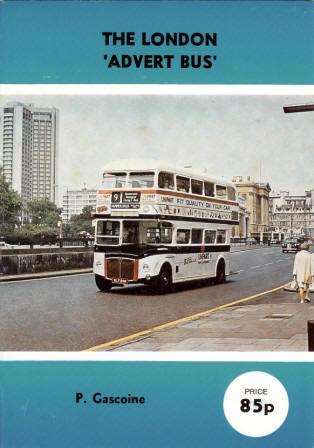 London
'Advert Bus, The
London
'Advert Bus, The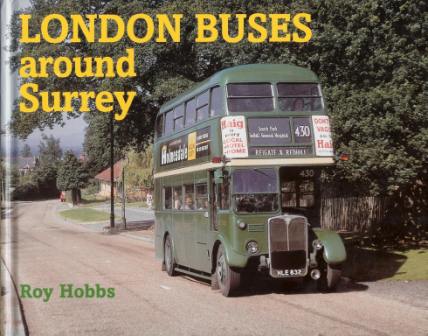 London
Buses around Surrey
London
Buses around Surrey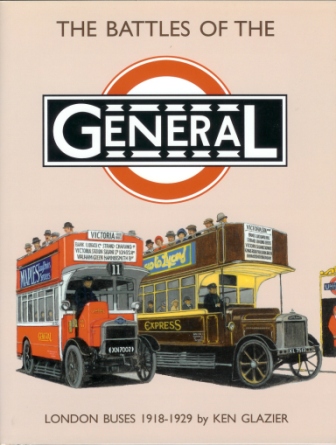 London Buses 1918-1929 - The Battles of the General
London Buses 1918-1929 - The Battles of the General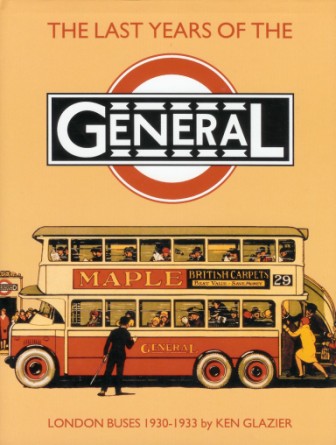 London Buses 1930-1933 - The Last Years of the General
London Buses 1930-1933 - The Last Years of the General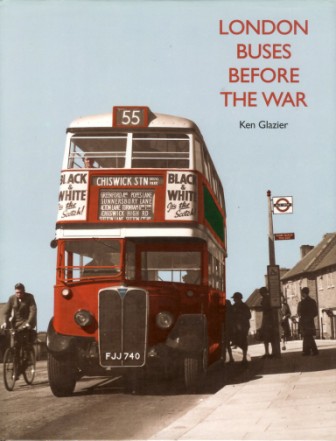 London Buses 1933-1939 - Before the War
London Buses 1933-1939 - Before the War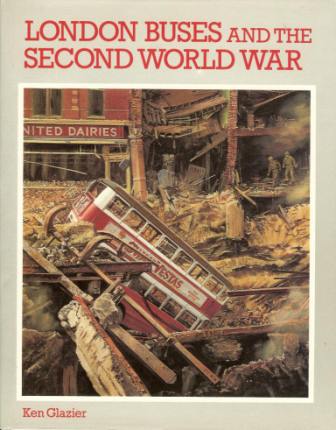 London Buses 1939-1945 - And the Second World War
London Buses 1939-1945 - And the Second World War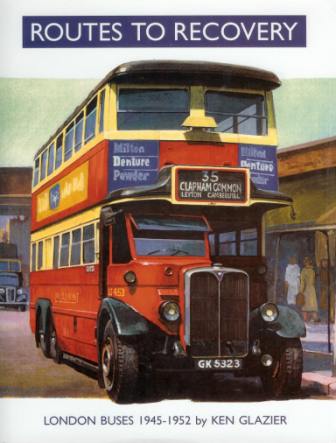 London Buses 1945-1952 - Routes to Recovery
London Buses 1945-1952 - Routes to Recovery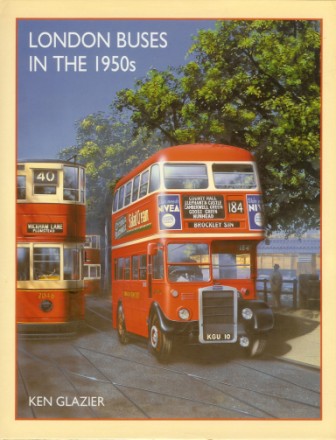 London Buses in the 1950s
London Buses in the 1950s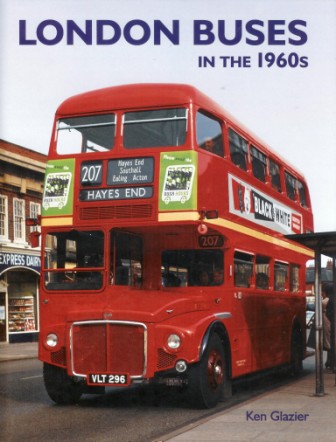 London Buses in the 1960s
London Buses in the 1960s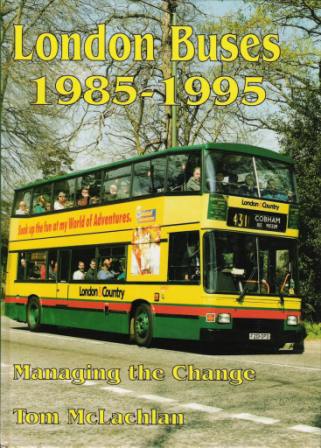
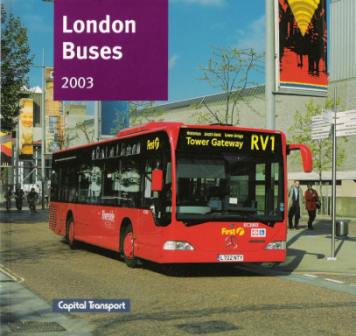
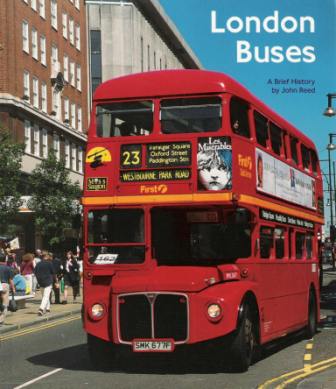
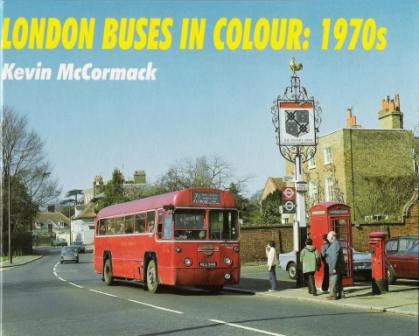
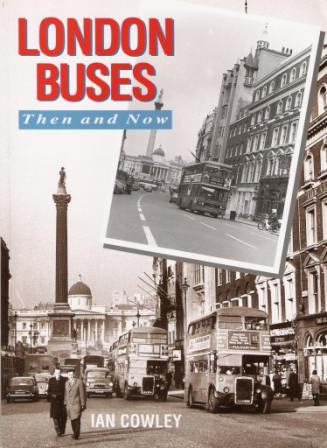
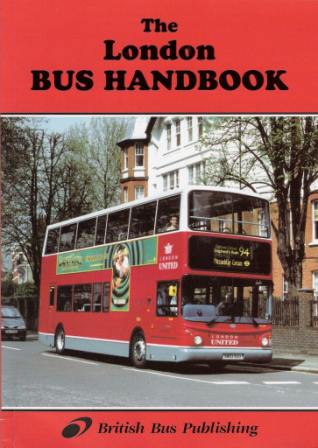
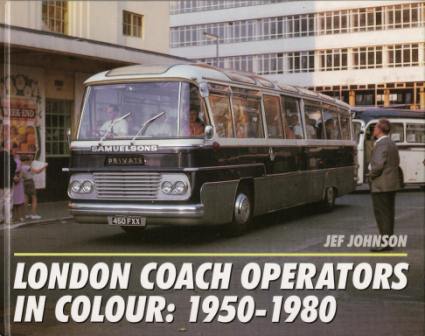
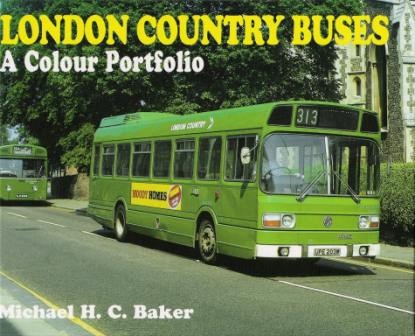
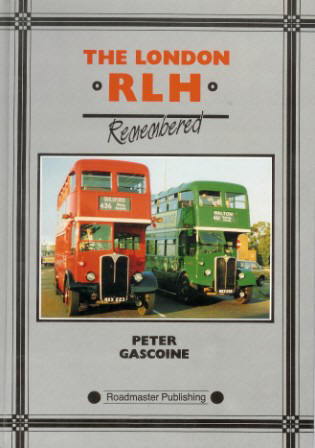 London RLH Remembered, The
London RLH Remembered, The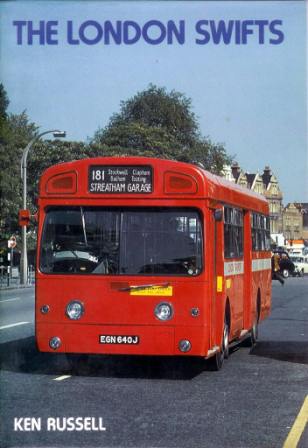 London Swifts, The
London Swifts, The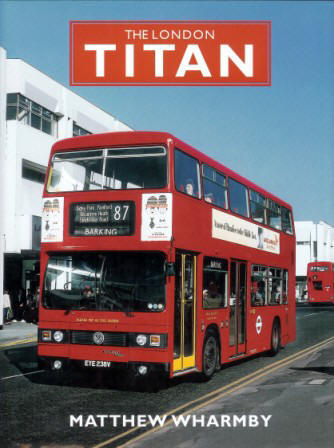 London Titan, The
London Titan, The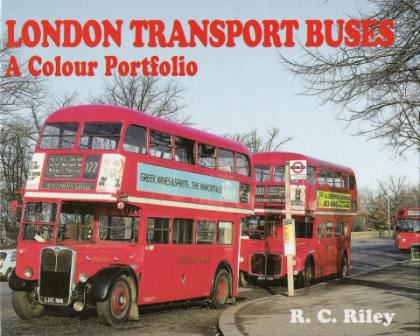
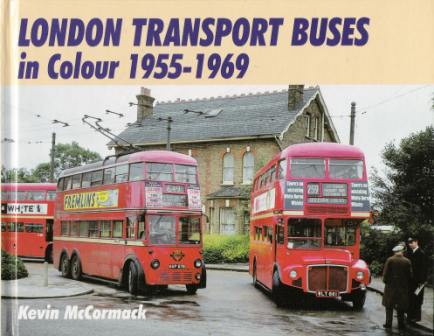
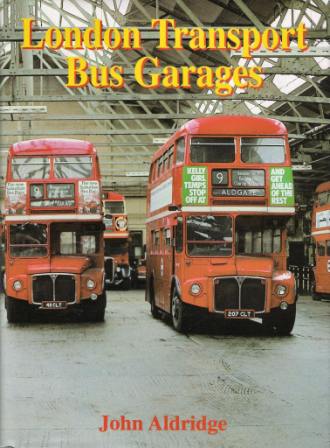
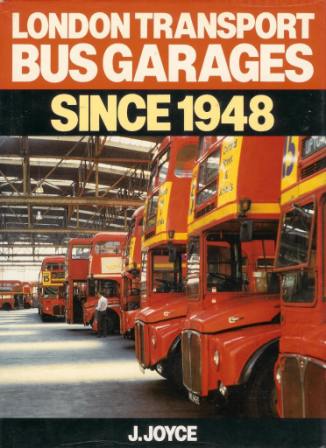 London Transport Bus Garages Since 1948
London Transport Bus Garages Since 1948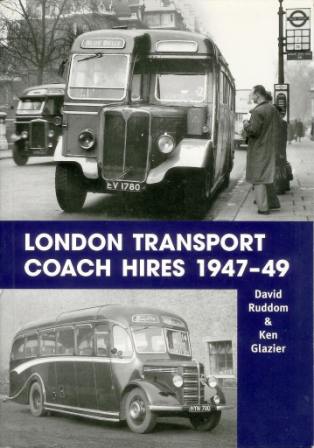 London Transport Coach Hires 1947-49
London Transport Coach Hires 1947-49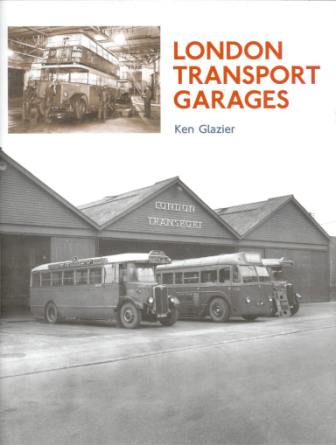 London Transport Garages
London Transport Garages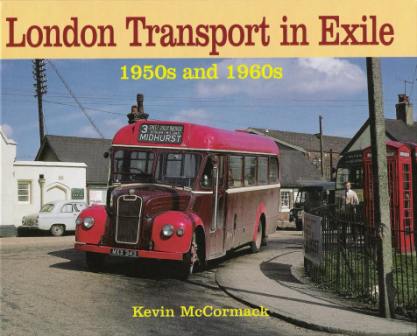
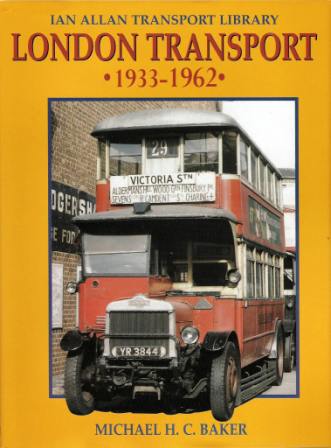
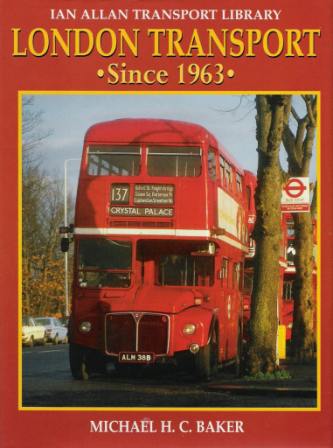
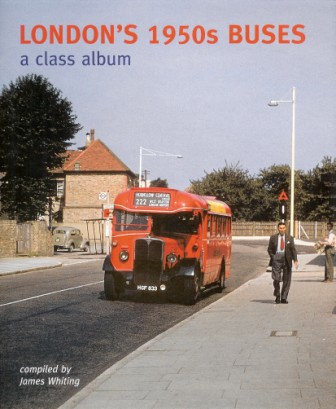 London's 1950s Buses - A Class Album
London's 1950s Buses - A Class Album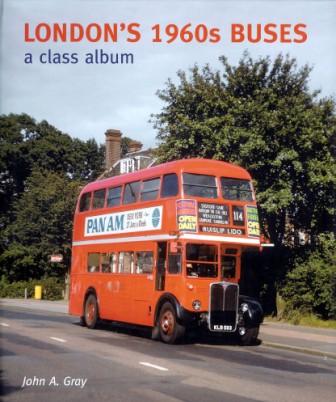 London's 1960s Buses - A Class Album
London's 1960s Buses - A Class Album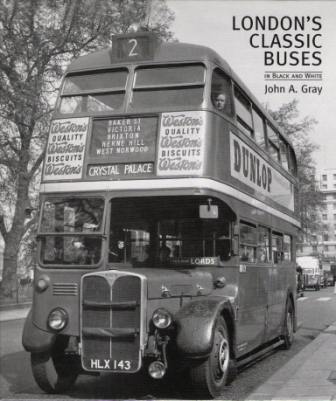
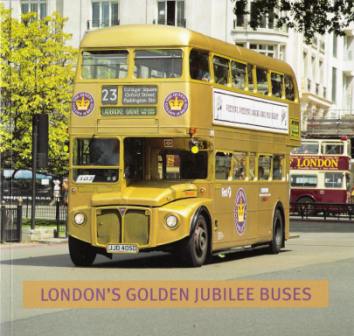
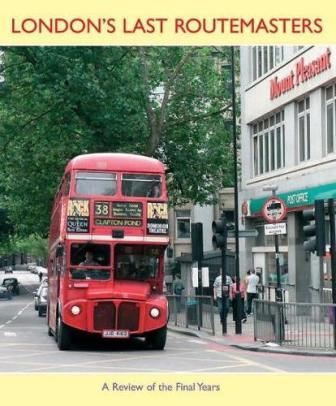 London's Last Routemasters
London's Last Routemasters.jpg) London's Transport
London's Transport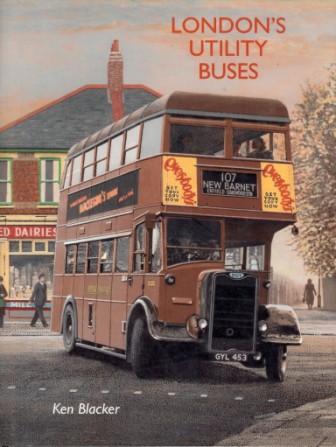 London's Utility Buses
London's Utility Buses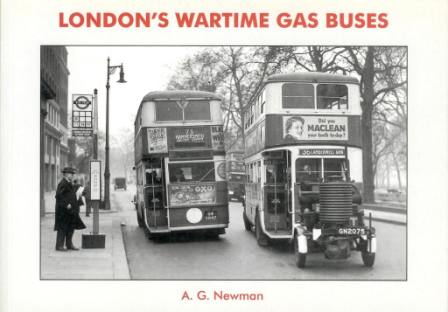 London's Wartime Gas Buses
London's Wartime Gas Buses